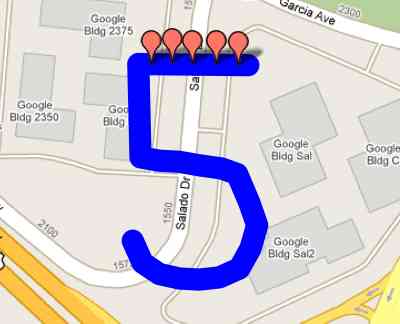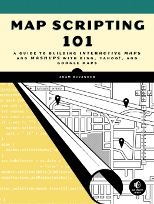Jun 28, 2010
Happy 5th Birthday, Google Maps API

It’s been five years since Google released the first version of its mapping API. Almost instantly the term “mashup” became synonymous with plotting data from one source on Google Maps. And since then, it’s gone from fun little toy to extremely useful tool. And while I appreciate all mapping APIs, it’s important to note this milestone for the influential platform. Let’s look where we are and how far we’ve come.
It’s easy to forget now, but the API followed some unofficial hacks (we celebrated this anniversary in April). Adrian Holovaty’s ChicagoCrime plotted public crime data in Chicago. Paul Rademacher’s HousingMaps let house hunters browse Craigslist visually. Holovaty’s site went on to become EveryBlock and roll its own mapping platform. Rademacher now works at Google.
Initial Reaction
There was tremendous excitement surrounding the announcement, Google making it official. Yet it’s quaint to realize that Google’s announcement came via a three sentence blog post and a spot on stage at the very first Where 2.0 Conference. It was not covered in TechCrunch–the site had barely launched.
I excitedly wrote about it on my own blog and quickly added maps to my Portland WiFi finder.
Everyone Adds a Mapping API
The Google Maps API probably didn’t take other map provider’s by surprise. Yahoo, for example, announced its API the following day. If it had been easier to use and wasn’t Flash-based, we might be living on a different geo web. Less than a month later Microsoft had Virtual Earth.
And around the same time the open source project Mapstraction was born. It now covers about a dozen mapping APIs with a single interface.
The Cutting Edge
It’s no longer enough to simply have a map. If it was, there wouldn’t have been much of a reason for me to write a book. Innovative developers will always push the boundaries, but here are some ways APIs are making it easier to create unique map apps:
- Change your actual map imagery: Open Street Map beget CloudMade, which had to have inspired Google’s map styling. Now anyone can have a truly custom map.
- Access data, where you want it: Administrating a geo database used to be hard. Now you can store your data in the cloud with My Maps Data or SimpleGeo. Or, if you want at public data, there are any number of sources to get just the information you need at the moment where you application needs it.
- Mobilize your maps: The potential of the mobile web is being realized. Smart phones know our location and can display the Real Web on beautiful, touchable screens. Unfortunately, the bandwidth and processing power on a tiny little phone isn’t quite up to computer speeds. That means that the speed of mapping APIs is becoming even more important. That’s why we saw Google switch to version 3, which was initially built with mobile devices in mind.
Maps in 2015
Will this post look as quaint in five years as the Maps API announcements from 2005 do now? Probably. With as much as we’ve packed into the Map mashup era so far, we’re moving even faster now. Thanks to Google Maps–and the developers who use any mapping APIs–we’re just getting started exploring the world around us.
 Hi, I'm Adam. I'm writing a book about developing maps on the web. This site is where I'll share the things I find and help you create your own maps.
Hi, I'm Adam. I'm writing a book about developing maps on the web. This site is where I'll share the things I find and help you create your own maps. 